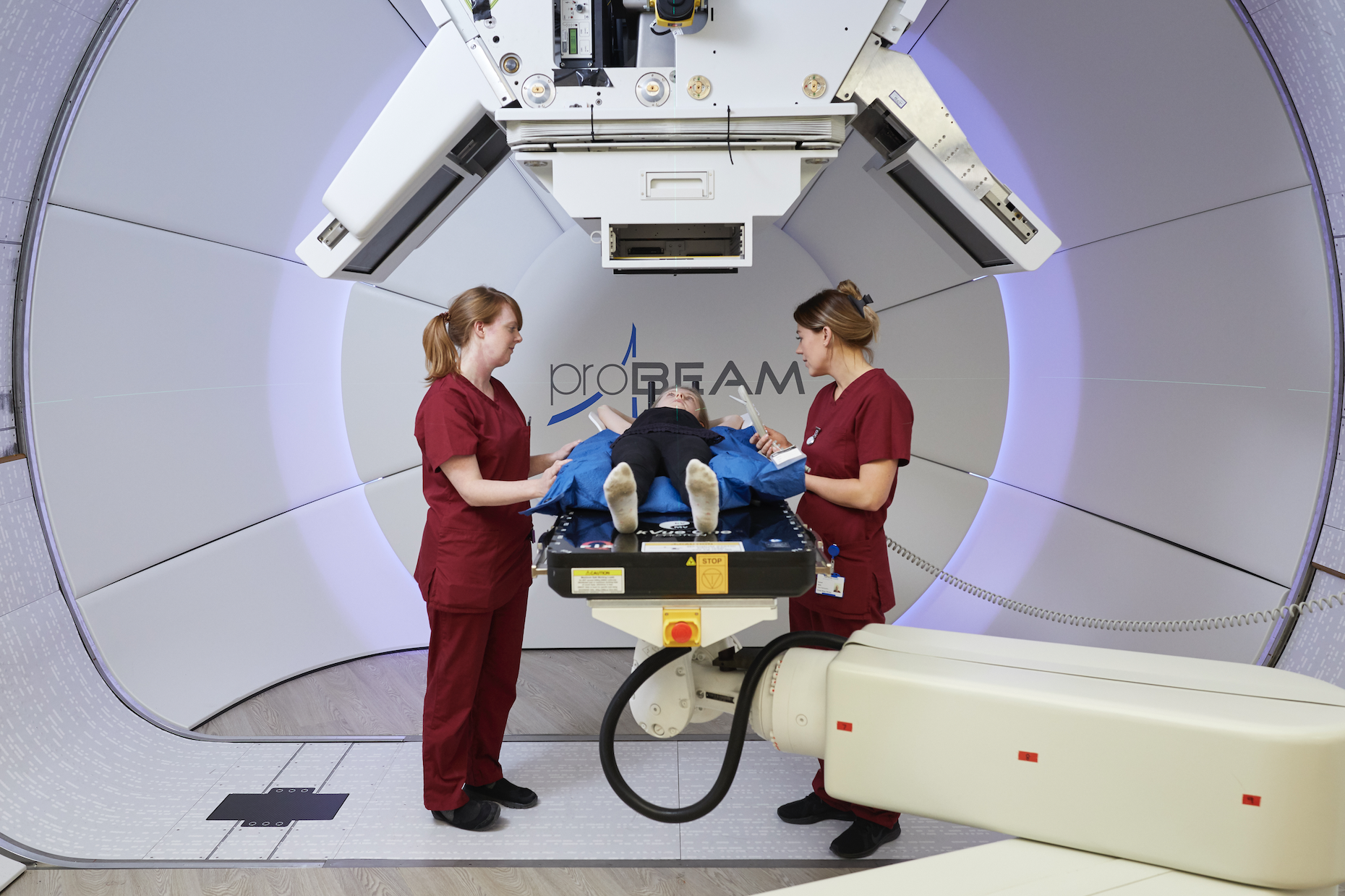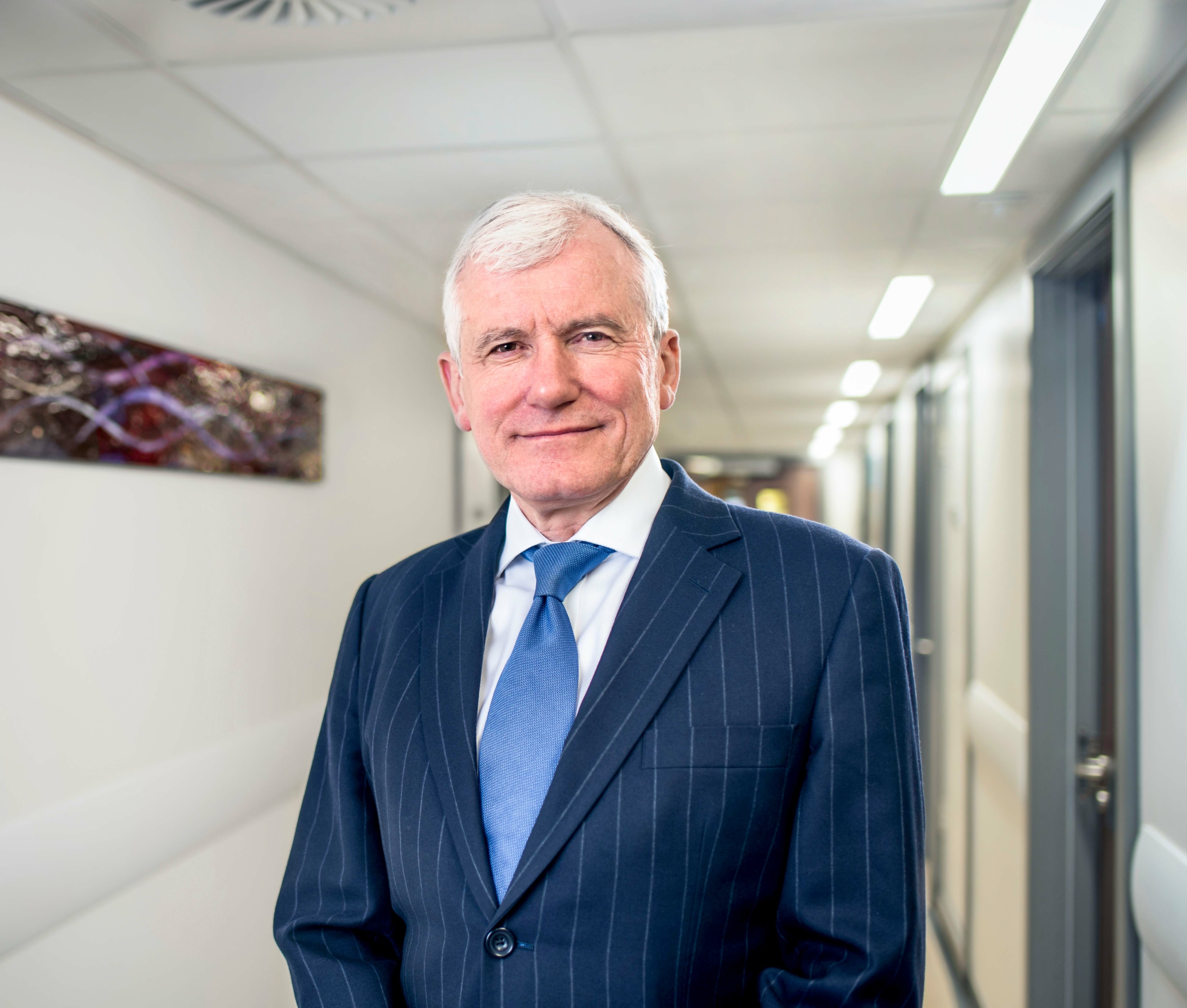Changing clinical practice for patients with Lymphoma
A REF 2021 Case Study

Lymphoma is a cancer that originates in the cells of the lymphatic system. The two main types are Hodgkin lymphoma (HL) and non-Hodgkin lymphoma (NHL).
Hodgkin lymphoma is typically a disease of young adults and is curable in a high proportion of cases. However, the consequences of late treatment such as second cancers, lung and heart disease are a major cause of future ill health and premature death. With around 2,100 people developing HL annually in the UK, there has been a great focus on reducing the long term consequences of chemotherapy and radiotherapy.
Non-Hodgkin lymphoma comprises over 60 subtypes of both B and T cell malignancies. With over 500,000 people annually worldwide diagnosed with NHL and over 14,000 of these in the UK, there is both a regional and global need to improve patient outcomes. Although outcomes for many patients with NHL are improving, many will either fail to respond to their initial treatment or relapse following their initial treatment and ultimately die of their disease. Thus, novel therapies are needed to improve patient outcomes.

Recognising the need for treatment improvements for patients with HL and NHL, Professor John Radford and Professor Tim Illidge have been leading international research efforts in both Hodgkin and non-Hodgkin lymphoma. Their research has led to developments across three key areas:
- Improving overall survival,
- Reducing treatment damage,
- Increasing access to more effective therapies
John Radford, Professor of Medical Oncology
“Everyone involved in this area of research is focused on improving treatment for lymphoma through greater efficacy and less toxicity. In collaboration with our patients and wonderful research team here in Manchester we’ve made significant advances in both these areas.” ~ Professor John Radford

Tim Illidge, Professor of Targeted Therapy and Oncology
“Manchester is involved from early discovery and early phase trials to late phase trials, which have changed clinical practice. We have a very large patient population which lends itself to this research and we couldn’t have done all of this without the support of our fantastic supportive team.” ~ Professor Tim Illidge

Impact highlights
University of Manchester research has led to five fundamental changes in the treatment of lymphoma:
- Individualisation of treatment for Hodgkin lymphoma
- Changing clinical guidelines on radiotherapy treatment for Hodgkin lymphoma
- Introduction of Brentuximab Vedotin in Europe and the US for Hodgkin lymphoma
- Creation of the national Breast Screening after Radiotherapy (BARD) dataset
- Development of two novel therapies in Non-Hodgkin lymphoma
PET Imaging Research
Hodgkin lymphoma
Prior to 2003, positron emission tomography (PET) scans were not used routinely in clinical practice. Radford and Illidge designed and led a trial (RAPID) of PET directed therapy for early-stage HL. In this trial, which ran from 2003 to 2010, PET scanning was performed after early-stage HL patients had undergone three cycles of chemotherapy (AVBD). PET negative patients were randomly allocated “no further treatment” or “standard radiotherapy”. Results revealed identical three-year survival, showing that early-stage HL patients who become PET negative after chemotherapy could avoid further radiotherapy and thus the associated risks of RT-induced second cancers and heart disease.
From 2008-2012, the phase III response adapted therapy trial (RATHL) for advanced-stage HL where Radford was a senior trial management group member, showed that for the 75% of patients with a negative PET scan after two chemotherapy cycles, bleomycin – a drug toxic to the lungs – could be dropped from subsequent cycles, thus avoiding additional treatment damage.
Both trials have allowed personalised therapy in HL with risk-adapted approaches based on PET imaging. These trials have confirmed the leading tole of Manchester in the UK as well as identifying the UK as the international leader in this field.
Reducing radiotherapy (RT) fields in HL and NHL
Radiotherapy is an important component in the treatment of lymphoma, but when used in the curative setting, particularly in younger patients, it can result in second cancers and premature deaths in younger patients as they grow old.
Illidge as the lead EU investigator alongside three other investigators of the International Lymphoma Radiation Oncology Group (ILROG) contributed to modernising RT by defining smaller yet effective RT fields which reduce the late radiation toxicity seen in patients. These smaller RT volumes are now administered in fewer fractions and doses that are better shaped to the tumour. Thus, treatment damage is reduced through lessening side-effects and resulting in improved patient outcomes.
Establishment of a national Breast screening After Radiotherapy Dataset (BARD)
Women who receive radiotherapy involving breast tissue under the age of 36, usually during treatment for lymphoma, have a 1:3 to 1:7 chance of developing breast cancer. Research led by Radford and Howell at the University of Manchester showed that national breast screening guidelines detect breast cancer at an early and thus highly curable stage, but that population take-up was poor with many women missing opportunities for curative treatment.
Led by Radford, The University of Manchester in collaboration with Public Health England established BARD, a national database of approximately 5,500 women at high risk of breast cancer after RT below the age of 36. This means that all women at risk can now be offered screening at the right time without need for individual referral by an oncologist or GP. BARD has changed practice across England and is featured in national very high risk screening guidelines.
Brentuximab Vedotin (BV)
Brentuximab Vedotin (BV) is an antibody drug conjugate that enables targeting of lymphoma cells which have the antigen (flag) of CD30 (present on only some lymphomas). This antibody binds to the target present in HL and some T Cell non-Hodgkin lymphomas. Manchester was the first centre to use this drug in Europe, with Radford and Illidge being the first to use these drug in HL and NHL respectively.
Hodgkin Lymphoma
From 2010 to 2011 Radford initiated an investigator-led study that showed BV was effective in patients with recurrent HL. Subsequently, from 2012 to 2016, the ECHELON-1 trial, for which Radford was the lead investigator for territories outside North America, compared chemotherapy alone vs chemotherapy with BV in untreated advanced HL. The addition of BV into the treatment regimen improved the proportion of patients alive and disease-free two years on from their treatment.
Non-Hodgkin Lymphoma
In T-Cell NHL, alongside four other international investigators, Illidge then went on to design the ECHELON-2 trial which was the largest randomised trial ever performed in T cell lymphomas. The outcomes from this trial were immense and demonstrated an increase in 46% overall survival rates in ALCL with 34% increased survival in all T Cell lymphomas, suggesting BV is a potentially curative treatment for some patients.
This trial saw the first person treated in Europe with BV from a phase one to a phase three trial at The Christie by Illidge. The phase two study brought about the regulatory approval of this drug by the EU in a relapsed type of NHL, namely anaplastic large cell lymphoma (ALCL).
Obinutuzumab and non-Hodgkin Lymphoma
In B-Cell NHL, the antibody rituximab, that binds to the CD20 target found on all B-cell lymphomas, was the first used to transform treatment for patients with NHL. Following this, Illidge’s lab was involved in developing an improved CD20 antibody called Obinutuzumab. The efficacy of this antibody was demonstrated in vivo, showing that this drug causes both direct cell death and also recruits immune effector cells which create an immune response within the body, thus targeting these cancerous cells. These observations were subsequently translated into clinical studies led by Radford that established Obinutuzumab as the new clinical standard used in routine practice in some B-cell malignancies. This drug has now been used approved by NICE in low grade follicular lymphoma which represents about 22% of all NHLs.
Summary
In Hodgkin Lymphoma, University of Manchester research has led to treatment changes such as:
- Individualising treatment, resulting in fewer treatment-related second cancers and less heart disease in early-stage HL patients alongside less lung damage in advanced-stage HL patients
- Changing clinical guidelines of radiotherapy treatment such as reducing dose and field size, thus decreasing patient risk
- Introduction of Brentuximab Vedotin (BV) in Europe and the US for advanced HL. This is the first new treatment option in over 40 years and has changed clinical practice internationally.
- The creation of the national Breast Screening after Radiotherapy (BARD) dataset, which identifies women at risk of radiotherapy-induced breast cancer following treatment for HL and other cancers. BARD is now part of national very high risk screening guidance.
In Non-Hodgkin Lymphoma, University of Manchester researchers have been pivotal to the development of two novel therapies. This has increased patient access to more effective and targeted drugs:
- Brentuximab Vedotin has improved long-term survival in T Cell NHL for those with relapsed disease. This was practice-changing and established a new standard of clinical care. Subsequently this has been approved by the European Medicines Agency (EMA) and US Food and Drug Administration (FDA) and thus recommended in UK and US clinical guidelines.
- Obinutuzumab which is a treatment for B cell HNL and chronic lymphocytic leukaemia (CLL), was approved with chemotherapy in 2017 by the EMA and FDA for untreated advanced follicular lymphoma (FL). This brought the first change in standard of care for over 10 years and offered a more effective patient treatment.

